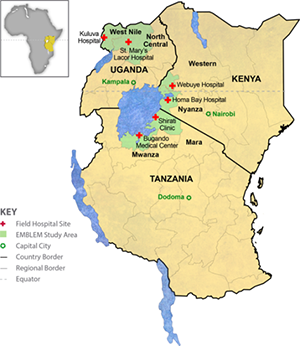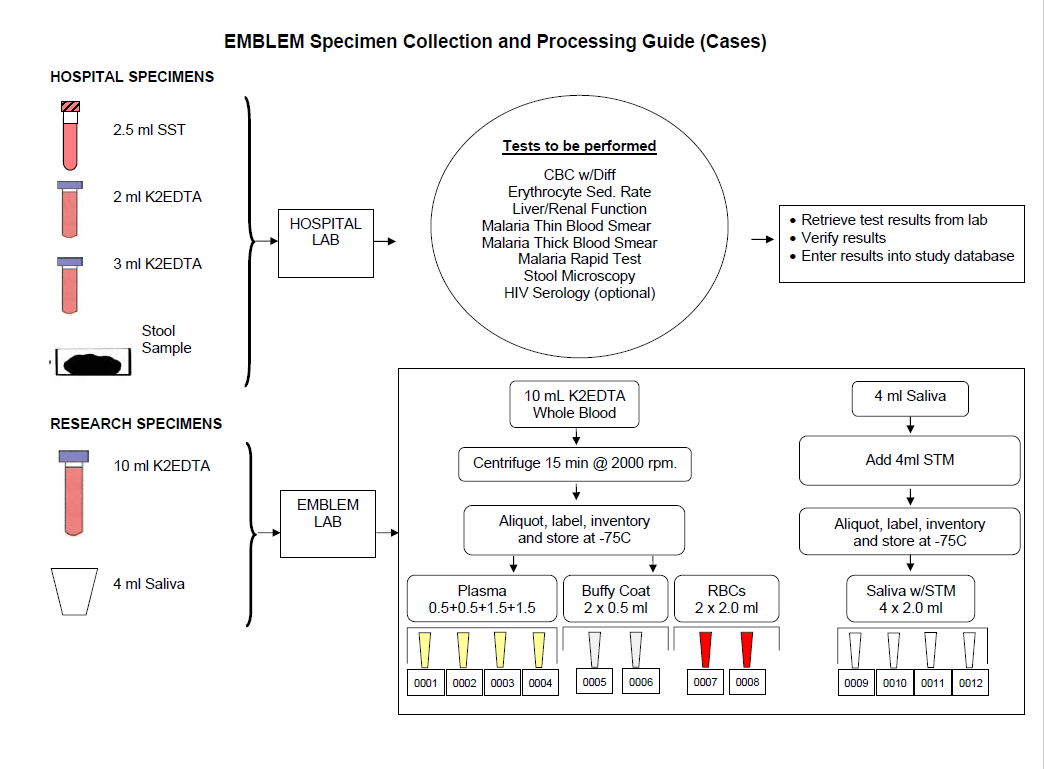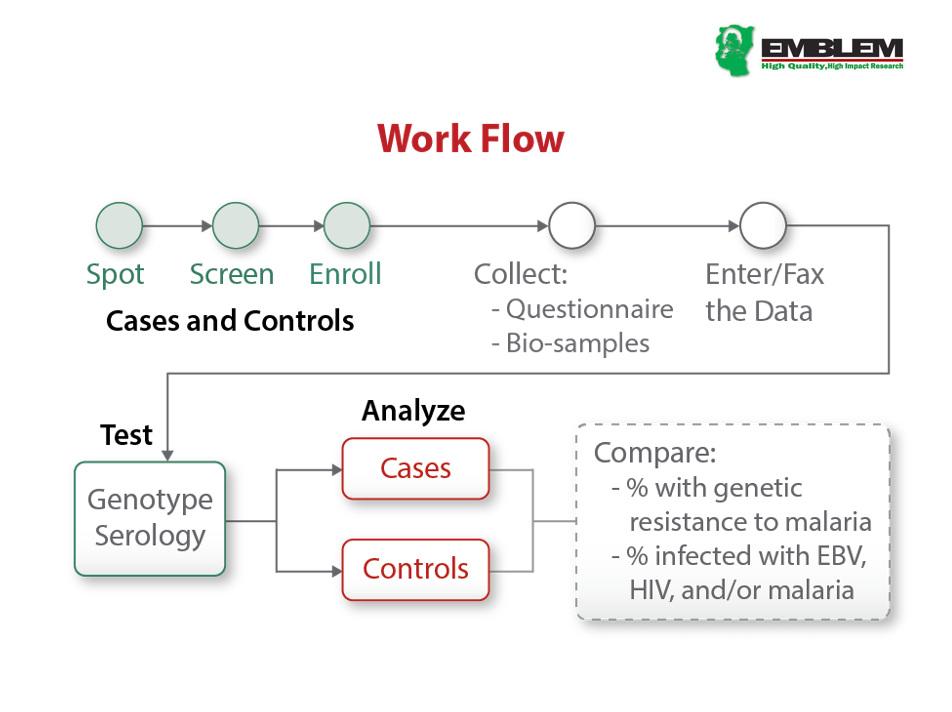Design of EMBLEM

EMBLEM was a population-based case-control study conducted during 2010-2016 in six regions in East Africa, where malaria transmission is holoendemic and year-round (see figure). Participants who were usual residents (> four months prior to enrollment) of the study area and aged 0-15 were eligible. Cases were defined based on histological and/or clinical features, imaging, and laboratory results compatible with an endemic Burkitt lymphoma (eBL) diagnosis (see Study Case Workflow below). Controls were randomly selected from 300 villages (100 per country) as a representative sample of the source population for cases.
Standardized protocols were used to capture research data, including age, sex, parental and household exposures, history of inpatient and outpatient malaria treatment, malaria and other fever, and use of indoor residual spraying (IRS) in the house, insecticides, and mosquito bed nets. Both cases and controls provided research blood, saliva, and from a proportion of cases, tumor tissues samples, which were processed into aliquots and stored at -800C (see Samples Workflow below).
EMBLEM accrued 800 cases and 2900 matched population controls (see Accrual in EMBLEM below), collecting some ~50,000 vials of samples, of which ~25,000 have been shipped to The National Cancer Institute (NCI) for further study.

EMBLEM Study Case Workflow. There are three phases: Potential Case Identification and Screening, Consent, and Case Data Collection. When a BL diagnosis is confirmed, EMBLEM staff screen the subject for study eligibility. EMBLEM staff also notifies Hospital staff to enter the BL case into BL registry. If eligible, the subject may consent to participation in the study. Once consented, a subject ID is assigned, a data collection packet is obtained, and Hospital ID labels are created for data forms. The EMBLEM ID is added to Screener and then study staff complete the tasks associated with data collection: Tracking Form; Questionnaire; height/weight measurements; Primary Tumor Location Form; blood, saliva, stool, and abdominal serous effusion collection; Request Tissue Specimen; and Procedure Data (lumbar puncture, bone marrow aspirate, abdominal/chest x-ray, abdominal ultrasound.)

All subjects' hospital or clinical samples (blood and stool), which were immediately tested in the hospital or health center laboratory and the results used to treat or advise the subjects. The subjects also provided research specimens (venous blood, saliva, and tumor samples for the cases). Research samples were transported in cold boxes to field laboratories, and centrifuged to separate into plasma, buffy coat, and red cell fractions for storage at -800C.

Of 862 suspicious cases recruited, 697 (80.9%) were enrolled as eBL; 428 (61.4%) with histological confirmation. We excluded 165 suspicious cases (135 from Uganda, 12 from Tanzania, and 18 from Kenya) after histological or clinical review. Of the 2,970 population-based controls approached, 2,934 (98.8%) were enrolled; 36 controls (Uganda=17, Tanzania=5, and Kenya=14) refused to participate.

The EMBLEM workflow was streamlined into five major phases: 1) Spotting, where potential cases and controls were identified and approached; 2) Screening, where case and control eligibility was determined; 3) Enrollment, which involved consent, data sample collection, data entry and transmittal; 4) Testing which included sample testing and data cleaning; 5) Analysis and dissemination of results.



